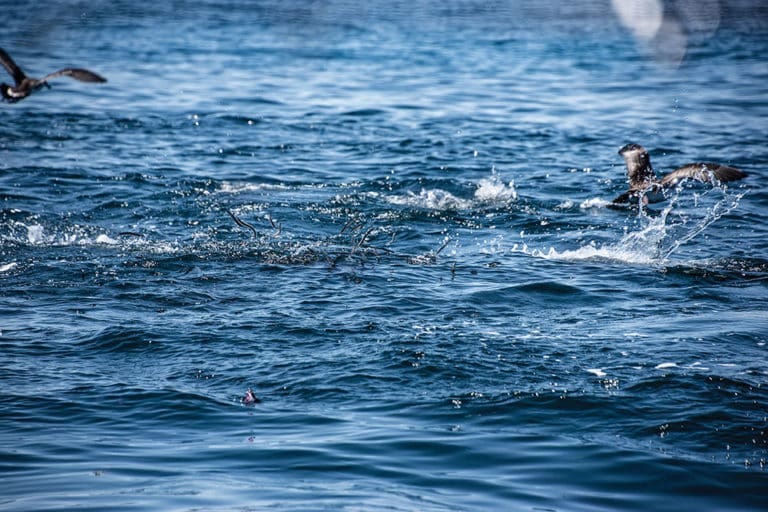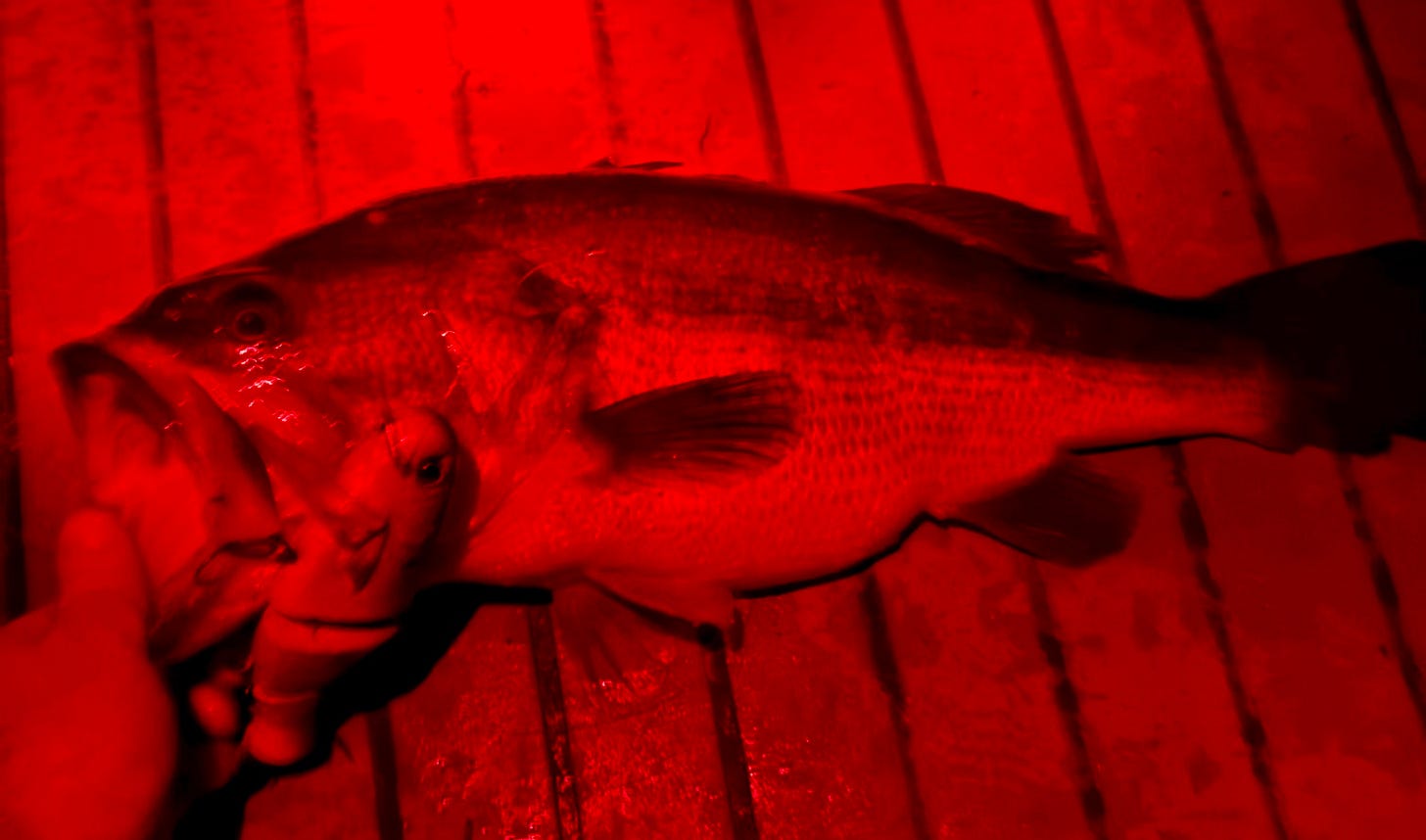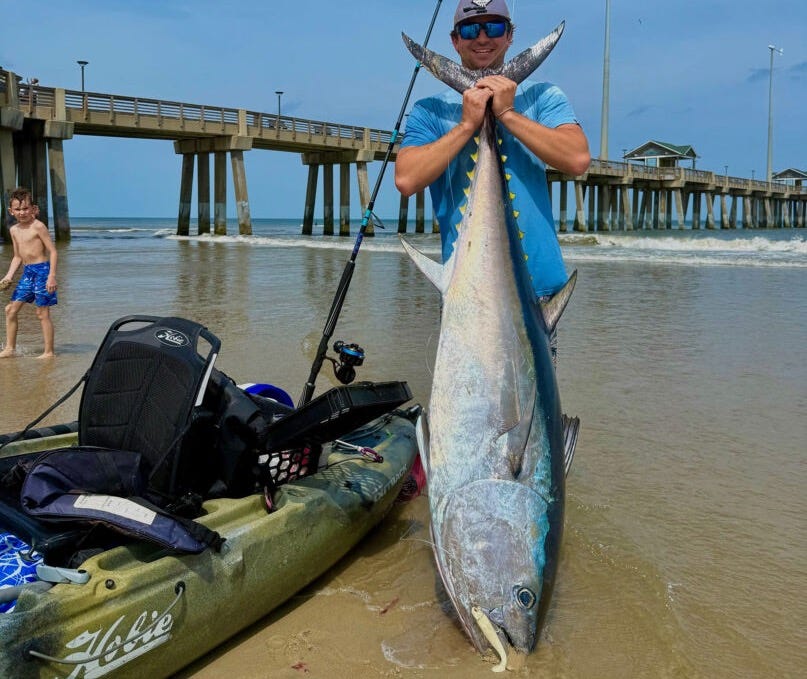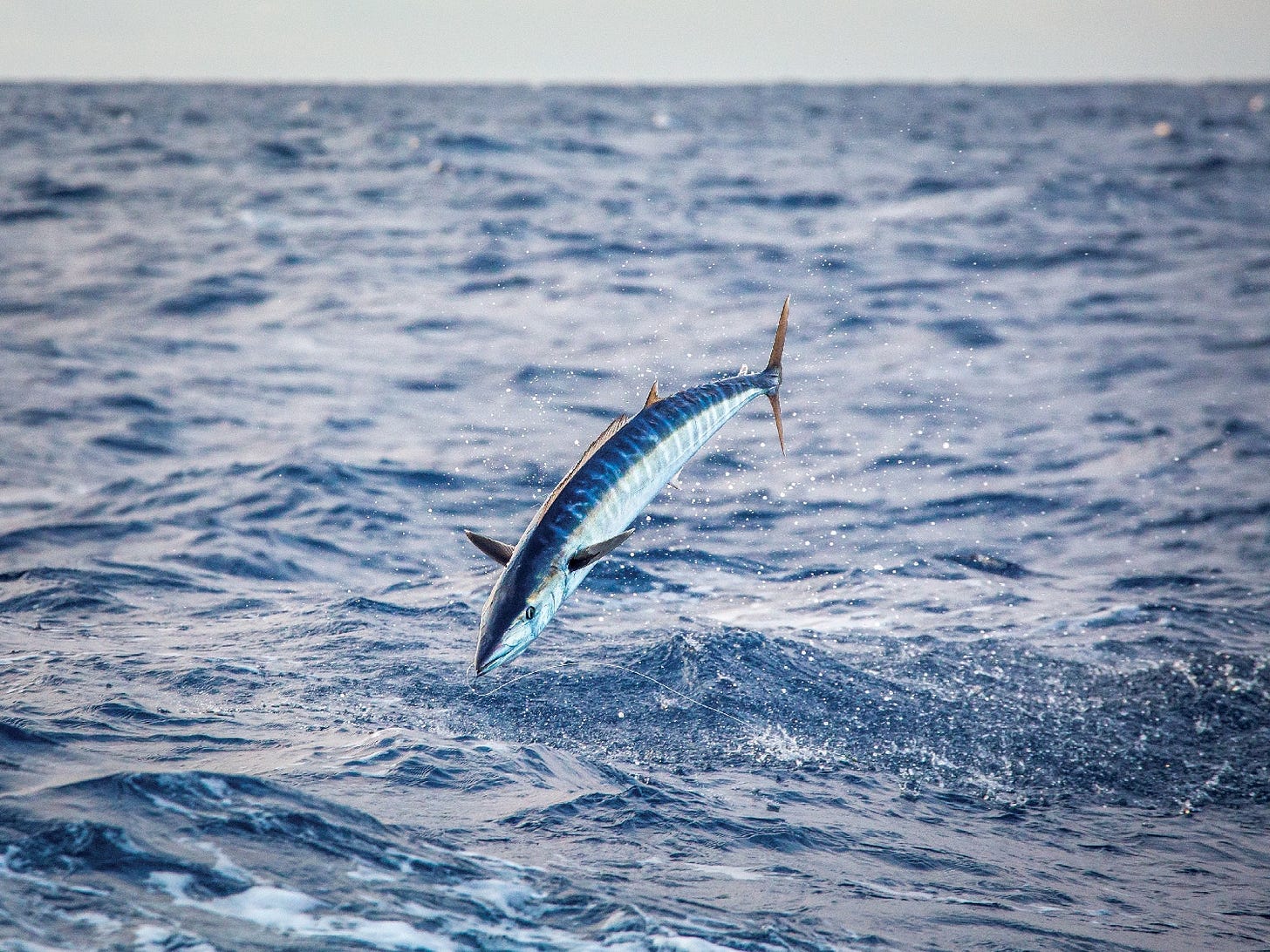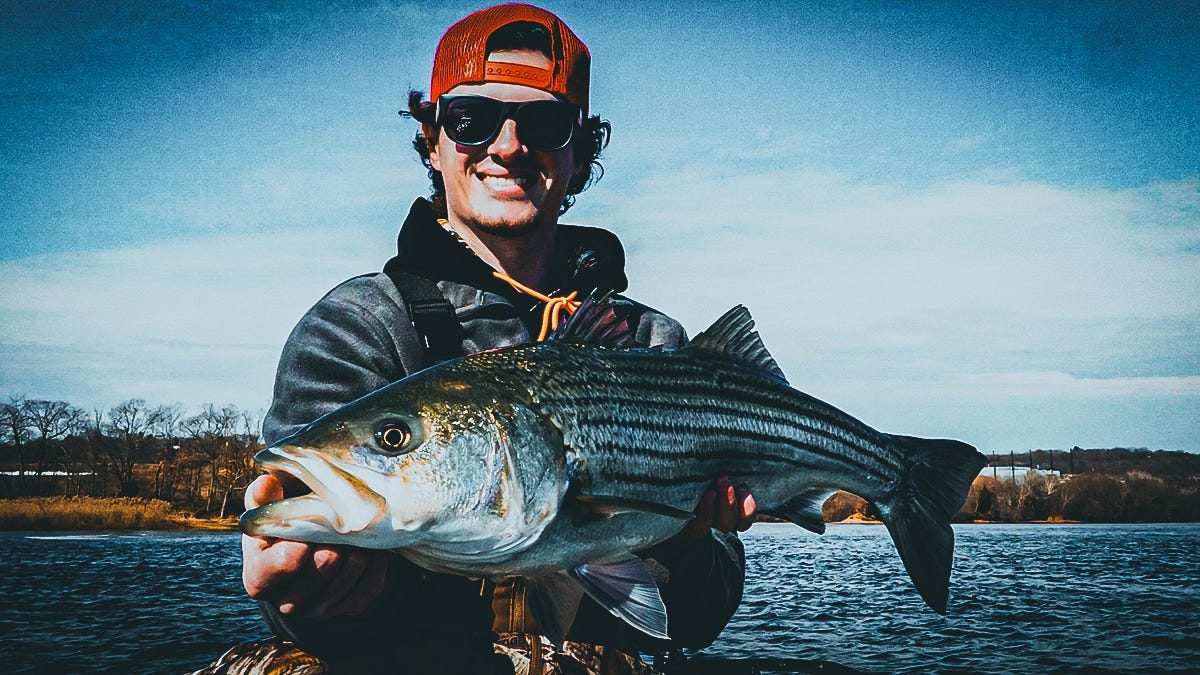The maritime rule of salvage has its origin in Roman law, which dictates that one who preserves or improves upon the misplaced property of another is owed compensation, even if the service was not requested. Let’s get out the internet trawler and get to work…
🎙️| Cut & Retie Podcast - Locals Only Stride-X Treatments —> Jesse Stanislaw of Stride Baits spills the beans on the rising popularity of glides in the salt.
🎥 | Striper Migration Report - April 15th 2025
🎥 | Tuna Junkies - 600 lb Bluefin Tuna On Spin
Fishing Reports | OnTheWater - FishermanMag - HullTruth - SOL
***Renew your licenses here. HMS vessel permits here.***
Gear Guide by Tak Waterman | NLBN 3'' Shrimp Jig Head + Z-MAN Kicker Crabz
Description | At 3.5” long and with jig-head options from 1/8oz to 3/4oz, this is a potentially deadly finesse combo to consider for backwater snoopin’ and flats sight-fishing when Stripers are keyed on crustaceans. Created to accurately imitate a sideways swimming crustacean, the buoyant elaztech should also stand up to fluke and the occasional bluefish.
Local Knowledge - Night Moves Are the Right Moves, Right Now
For three die-hard Northeast anglers—Jon Hastings, Passang Wong Chuu, and Jeremy Campbell—the pursuit of trophy largemouth under the cover of darkness has become a calculated obsession. While each has their own approach, all agree: the real challenge of nighttime fishing is mental. As Chuu puts it, “catching fish ultimately gives you the confidence to not catch and keep going.”
Hastings, former UMass College Fishing Team president, thrives on the contrast between fast-paced tournaments and the silent, slow-motion chess match of night fishing. For him, it’s about finding that one moment—cloud cover, falling barometer, or the hush of a New Moon—where a fish has no choice but to commit. He tailors his presentations to conditions: subtle wakebaits near cover on calm nights, or loud jointed swimmers when wind and structure align. His most memorable outing? A 30-pound limit topped by a 7-14, all on a Sherpa Crawler retrieved slow and erratic.
Chuu, maker of Sherpa Swimbaits, is a lunar opportunist—favoring New Moons in clear water and Full Moons in tannic systems. He bucks conventional pre-spawn thinking, cranking his gill-style plugs in sub-50° temps. Norther-strain bass, he argues, are built for volatility, feeding hard in narrow windows when fronts move fast. He’s pulled fish in shallow, frigid water by dead-sticking big baits near cover, relying on stealth and displacement rather than brute noise. “Don’t burn your own bite,” he warns—cast smart, not often.
Campbell, a Rhode Island big-bait tactician, brings a grassroots, data-driven approach. He scouts water by studying the build of mid-sized bass, then locks in on productive areas that produce year after year. For each catch, he logs everything—moon phase, water temp, time of strike—to find repeatable patterns. His early-season go-to’s include wide-bodied slow-wake lures like the Shellcracker or Holy Crappie. And when the bite window opens, he doubles down: “When the bite is on, fish hard and empty the tank.”
Together, these sharpies prove that successful nighttime bassing isn’t about luck—it’s about slowing down, tuning in, and trusting your process. The big ones come to those who think, listen, and refuse to quit after dark. Now couldn’t be a better time to get after it.
*This is an AI-abridged segment from my On The Water February 2024 Bass Issue contribution entitled “Waking or Dreaming?”.
**Can’t tell if this Bob Seger deephaus remix is absolutely fire flames or a total abomination.
Bluefins Off the Beach (SportfishMag) - “On Friday, April 4, kayak angler Stefan Turko decided to target the tuna that had been getting so much attention at the pier. After a lot of planning and safety preparations, Turko paddled his kayak out through 2- to 3-foot surf intent on the ultimate saltwater sleigh ride. After tracking activity between the end of the pier and a nearby buoy, Turko made a long cast to surface action with a Van Stall 250 and instantly hooked up. He hooked the massive fish on a 5-inch swimbait less than 1/4 mile off the beach in about 25 feet of water. After a 30-minute battle, he gaffed the fish and brought it to the beach with some help from some salty friends.”
The Basics of Live Baiting for Wahoo (FloridaSportfishing) - “For wahoo, I go with a minimum of 50lb wire (titanium because it’s reusable), a 4/0 live bait J hook for the nose of the bait, and a minimum of two #1 treble hooks for pinning to the bait’s body. There are several methods of rigging your treble hooks. The traditional method is attaching a length of wire from the nose J hook to the first “mid- section” treble hook, then running another length of wire from the mid-section to the “tail-section” treble hook. That is a daisy- chain fashion rig that works well. I choose the South Florida method of running two different wire strands for each treble hook. Unlike the traditional “daisy-chain” rig, these “South Florida” rigs have two treble hooks with independent wire connections to the bait’s nose hook at different lengths. This lessens the risk of rig failure by a third and is worth the added cost of the extra wire. It also allows you to pin the treble hooks on either side of the bait’s body, exposing hooks for better effectiveness from a left-side or right- side strike.”
Saltwater Edge - Fishing Forecast – April Full Moon 2025 (SWE) - Key highlights from the forecast include:
Activity is accelerating with the full moon tide cycle, especially at night.
Soft plastics on light jigs and swimming plugs are productive lures.
The bite window has improved significantly since late March, and this moon phase is expected to trigger more consistent action.
Anglers are advised to focus on tidal outflows and warm flats, especially during dusk and dawn.
Tips for Targeting Mahi Mahi (InTheBite) - “It’s common knowledge that mahi are often found under debris floating on the surface: weed lines, patches of weed, a floating tree limb, or even a floating bucket. Check out anything and everything you find floating in blue water, and always assume a fish or two might be there. You can do this by simply stopping and looking, or if you don’t see them milling around under the flotsam, take a cast or two to make sure. Mahi love yellow bucktail jigs and they will also fall for a cut chunk of ballyhoo. Then cast chunks on hooks and you can begin picking them off. Remember to always leave one hooked fish in the water until someone else hooks a second fish, then you can boat the first one. The school will stay with the hooked fish, almost always enabling you to catch a few before they lose interest.”
Looking for more information about a product after reading The Weekly Salvage?
Try using GearSay, the first generative AI tool specifically tailored to help you find the right fishing tackle.
Type in a question like “what are the best stages of the tide and moon for finding Striped Bass eating crabs?" to get instant results.
Thanks for reading The Weekly Salvage, until next week!
Have feedback or want to learn more?
Reach out to us on IG @Blowin_We_Goin



